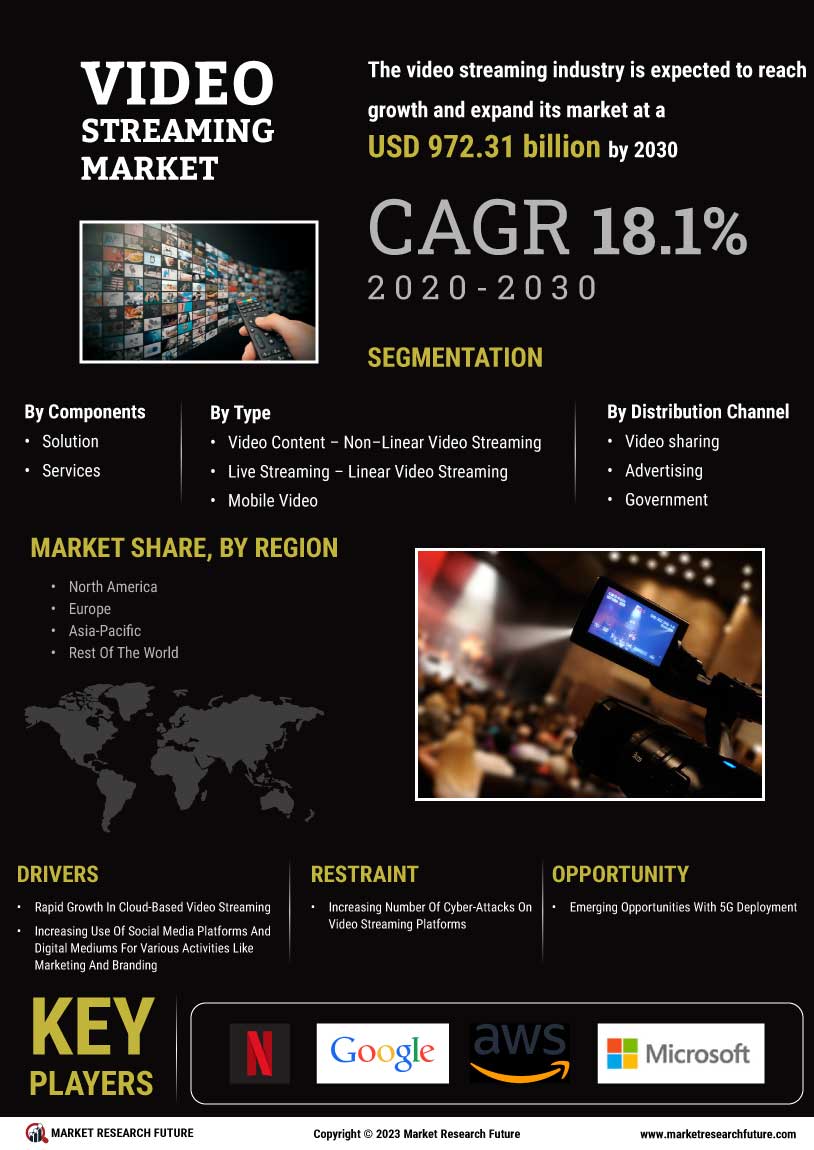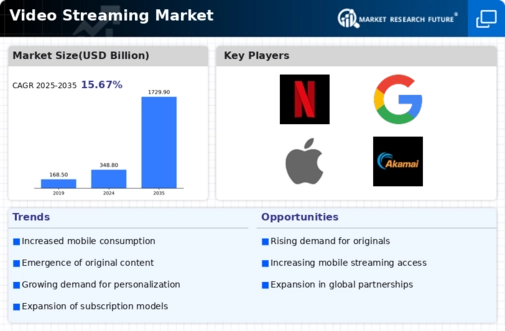Expansion of International Content
The Video Streaming Market is experiencing a notable expansion in international content offerings. As platforms seek to attract diverse audiences, they are increasingly investing in foreign films and series, which has the potential to broaden their subscriber base. Recent trends indicate that consumers are more open to exploring content from different cultures, leading to a rise in the popularity of international titles. This strategy not only enhances the content library but also fosters a sense of inclusivity among viewers. Companies that successfully curate a mix of local and international content are likely to gain a competitive edge in the market. As the Video Streaming Market evolves, the emphasis on international content is expected to grow, reflecting the changing preferences of a global audience.
Rising Demand for On-Demand Content
The Video Streaming Market is experiencing a notable surge in demand for on-demand content. Consumers increasingly prefer the flexibility of watching shows and movies at their convenience, leading to a shift from traditional broadcasting. According to recent data, the number of video streaming subscribers has reached over 1.5 billion worldwide, indicating a robust growth trajectory. This trend is further fueled by the proliferation of smart devices, which allow seamless access to streaming services. As a result, companies in the Video Streaming Market are compelled to enhance their content libraries and invest in original programming to attract and retain subscribers. The competition among platforms intensifies as they strive to meet the evolving preferences of viewers, suggesting that the demand for on-demand content will continue to shape the industry landscape.
Adoption of Subscription-Based Models
The Video Streaming Market is witnessing a significant shift towards subscription-based revenue models. This approach allows consumers to access a wide array of content for a fixed monthly fee, which appears to be more appealing than traditional pay-per-view options. Recent statistics indicate that subscription video on demand (SVOD) services have seen a growth rate of approximately 20% annually, reflecting a strong consumer preference for this model. The success of platforms like Netflix and Disney+ has prompted many new entrants to adopt similar strategies, thereby increasing competition. This trend not only benefits consumers through diverse content offerings but also provides companies with a steady revenue stream. As the Video Streaming Market evolves, the subscription model is likely to become the dominant form of monetization, influencing how content is produced and distributed.
Increased Focus on Original Programming
The Video Streaming Market is placing an increased emphasis on original programming as a key driver of subscriber growth. Platforms are recognizing that exclusive content can significantly differentiate them from competitors. Data indicates that original series and films often attract new subscribers, with many consumers willing to pay for access to unique offerings. This trend has led to substantial investments in content creation, with some companies allocating billions of dollars annually to produce original content. As a result, the Video Streaming Market is witnessing a surge in creativity and innovation, as platforms strive to deliver compelling narratives that resonate with audiences. The focus on original programming is likely to continue shaping the industry, influencing both content strategy and viewer engagement.
Technological Advancements in Streaming Quality
Technological advancements are playing a crucial role in shaping the Video Streaming Market. Innovations such as 4K resolution, HDR, and adaptive bitrate streaming are enhancing the viewing experience, making it more immersive and enjoyable for consumers. Data suggests that the demand for high-definition content is on the rise, with a significant percentage of viewers now expecting superior quality. As internet speeds improve globally, streaming services are increasingly able to deliver high-quality content without buffering issues. This focus on quality not only attracts new subscribers but also retains existing ones, as viewers are more likely to remain loyal to platforms that provide an exceptional experience. Consequently, the Video Streaming Market is likely to continue investing in technology to meet these consumer expectations, thereby driving further growth.


















Leave a Comment